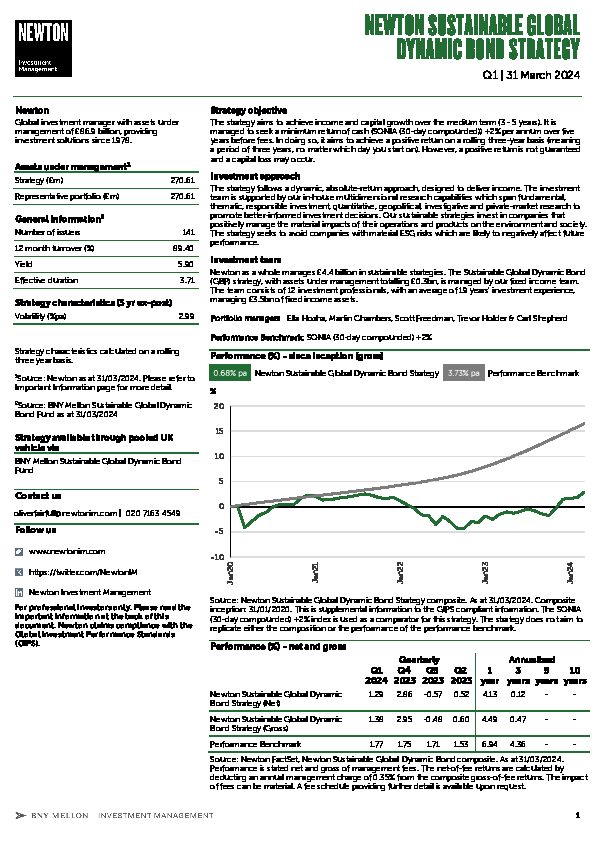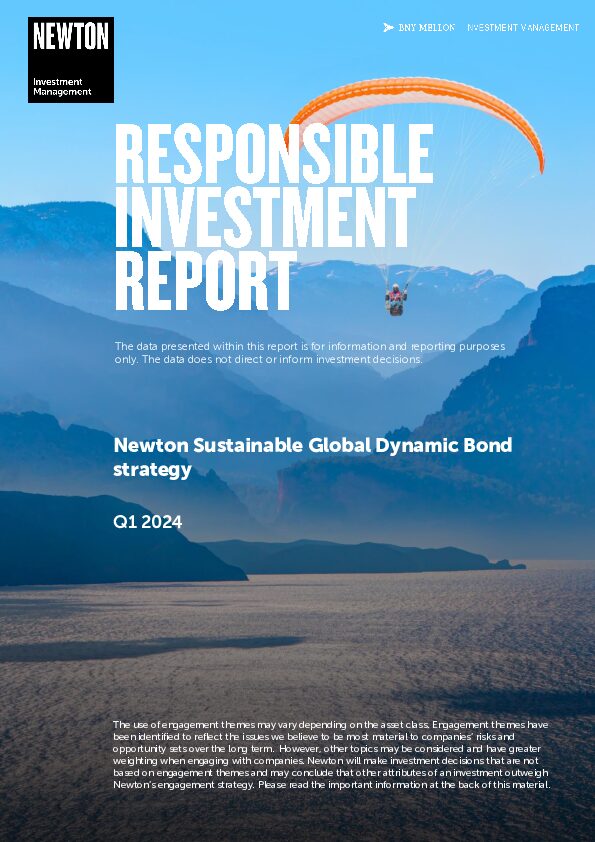Strategy profile
-
Objective
-
The strategy aims to achieve income and capital growth over the medium term (3-5 years). It is managed to seek a minimum return of cash (SONIA (30-day compounded)) +2% per annum over five years before fees. In doing so, it aims to achieve a positive return on a rolling three-year basis (meaning a period of three years, no matter which day you start on). However, a positive return is not guaranteed and a capital loss may occur.
-
Performance benchmark
-
SONIA (30-day compounded) +2%
-
Red lines
- Our ‘red lines’ are built on a combination of exclusions that effectively avoid investments in security issuers involved in or that generate a material proportion of revenues from areas of activity that we deem to be harmful from a social and/or environmental perspective. Read more about our red lines.
-
Strategy inception
-
Composite inception: 1 March 2019
-
Strategy available through pooled UK vehicle
-
BNY Mellon Sustainable Global Dynamic Bond Fund
View Key Investor Information Document
View prospectus
Investment team(Test)
Our Sustainable Global Dynamic Bond strategy is managed by a focused, experienced fixed-income team. In-house research analysts are at the core of our investment process, and our multidimensional research platform spans fundamental, thematic, responsible investment, quantitative, geopolitical, investigative and private-market research to promote better-informed investment decisions.
Your capital may be at risk. The value of investments and the income from them can fall as well as rise and investors may not get back the original amount invested.
Newton will make investment decisions that are not based solely on ESG criteria. Other attributes of an investment may outweigh ESG analysis when making investment decisions. The way that ESG and sustainability criteria are assessed and the evaluation of their suitability for Newton’s sustainable strategies may vary depending on the asset class and strategy involved. For Newton’s sustainable strategies, ESG analysis is performed prior to investment for corporate investments (single name equity and fixed-income securities). The analysis will then also follow the Newton sustainable investment process to ensure it fits with the wider Newton sustainable investment philosophy.














